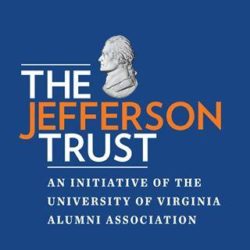District of Columbia View Establishments by District of Columbia Cities

Finding Their Civil Rights in the United States Capital
Because Washington, DC was established in 1791 as the seat of the U.S. government, it is not a state. In the nineteenth century, Washington, DC was considered a "southern" town and white owners used enslaved people as domestic workers and laborers throughout the area.
Freed people came to the District in search of better economic opportunities and, before the Civil War, formed one of the largest freed communities, alongside Baltimore and St. Louis. As the District grew, both federal buildings, such as the Capitol and White House, and public road construction required both skilled and unskilled labor, which both freed and enslaved men undertook. Over time, a professional middle class also developed as people became teachers, ministers, businessmen, noted chefs, and hotel owners. Even though whites refused to work with African Americans and job opportunities for African Americans were generally confined to work that whites refused to do, the white community patronized their businesses, particularly their restaurants.
African Americans continued to face residential and employment restrictions throughout the pre-Civil War era. Enslavement remained legal until 1862, when President Abraham Lincoln signed a bill emancipating all enslaved District residents (this bill was separate from the 1863 Emancipation Proclamation freeing all enslaved people living in Confederate States). After the Civil War, things began to change, ever so slowly.
Howard University opened in 1867, first with the Colleges of Liberal Arts and Medicine, and followed by the Education, Architecture, Dental and Law Colleges. The Law School operated as a night school until the 1920s, when Charles Hamilton Houston became the dean and made it a day school. Houston's most noted student, Thurgood Marshall, came from Baltimore to study with Houston, and their relationship formed the basis for the legal teams used by the NAACP to attack segregation from 1935 until 1967.
Education and employment opportunities with Howard University and the Federal government enabled many African Americans to afford a middle-class lifestyle, and they in turn became leisure travelers to Green Book hotels in Maryland, such as Golden's Hotel and Shirley K Hotel in Colton, St. Mary's County. Howard University Architecture School Dean Albert Irvin Cassell designed Baltimore's Madison Street YWCA interior, also a Green Book listing, which provided housing for middle-class teachers and nurses.
Washington, DC's Green Book listings demonstrate how the local community provided services to visitors during segregation. Like Maryland and other eastern States, Victor Green began listing tourist homes, hotels, restaurants and bars in Washington in 1938. Prominent hotels for African Americans included the Whitelaw Hotel on T Street and the Hotel Clore on 7th Street. The listings expanded over the next thirty years. By the early 1960s, the larger business hotels, such as the Hilton on K Street and the Sheraton Park on Connecticut Avenue, began to welcome African American groups, such as the National Association of Colored Women and those involved in planning the August 1963 March on Washington.
Many of the District's Green Book sites are found along or near the U Street Corridor, from Howard University and Le Droit Park on the east and to the intersection of Florida Avenue and 18th Street to the west, and along Georgia Avenue (US 29). Several businesses are located along US 1 (Rhode Island Avenue) in northeast Washington, reflecting the eastern extent of the community.
One important site in Northeast is the Langston Golf Course in Anacostia Park. Like Baltimore and other cities with urban golf parks, Washington's African American golfers experienced discrimination, and were unable to play at white-controlled or city-owned parks. That restriction began to change in the late 1930s, when African Americans protested lack of access to golf courses in National Park Service control. Secretary Harold Ickes enabled the Royal Golf Club to use Anacostia Park's golf course north of Benning Road, where the club still plays today.
Anne E. Bruder and Pamela Jones
Sources:
Asch, Chris Myers & George Derek Musgrove. Chocolate City, A History of Race and Democracy in the Nation's Capital. Chapel Hill, NC: University of North Carolina Press, 2017.
Bubin, Patricia Kuhn. Links to the Past: A Historic Resource Study of National Park Service Golf Courses in the District of Columbia. Washington, DC: US Department of the Interior, 2017.
Carey, Francine. Urban odyssey: A Multicultural History of Washington, D.C. Washington, DC: Smithsonian Institution Press, 1996.
Demas, Lane. Game of Privilege An African American History of Golf. Chapel Hill, NC: The University of North Carolina Press, 2017.
Lindsey, Treva B. Colored No More, Reinvesting Black Womanhood in Washington, D.C. Urbana, IL: University of Illinois Press, 2017.
Smithsonian Anacostia Museum. The Black Washingtonians, 300 Years of African American History. Hoboken, NJ: John Wiley & Sons Inc., 2005.
Trieschmann, Laura V., et al. Greater U Street Historic District National Register of Historic Places Nomination Form. Washington, DC: US Department of the Interior, 1998.



